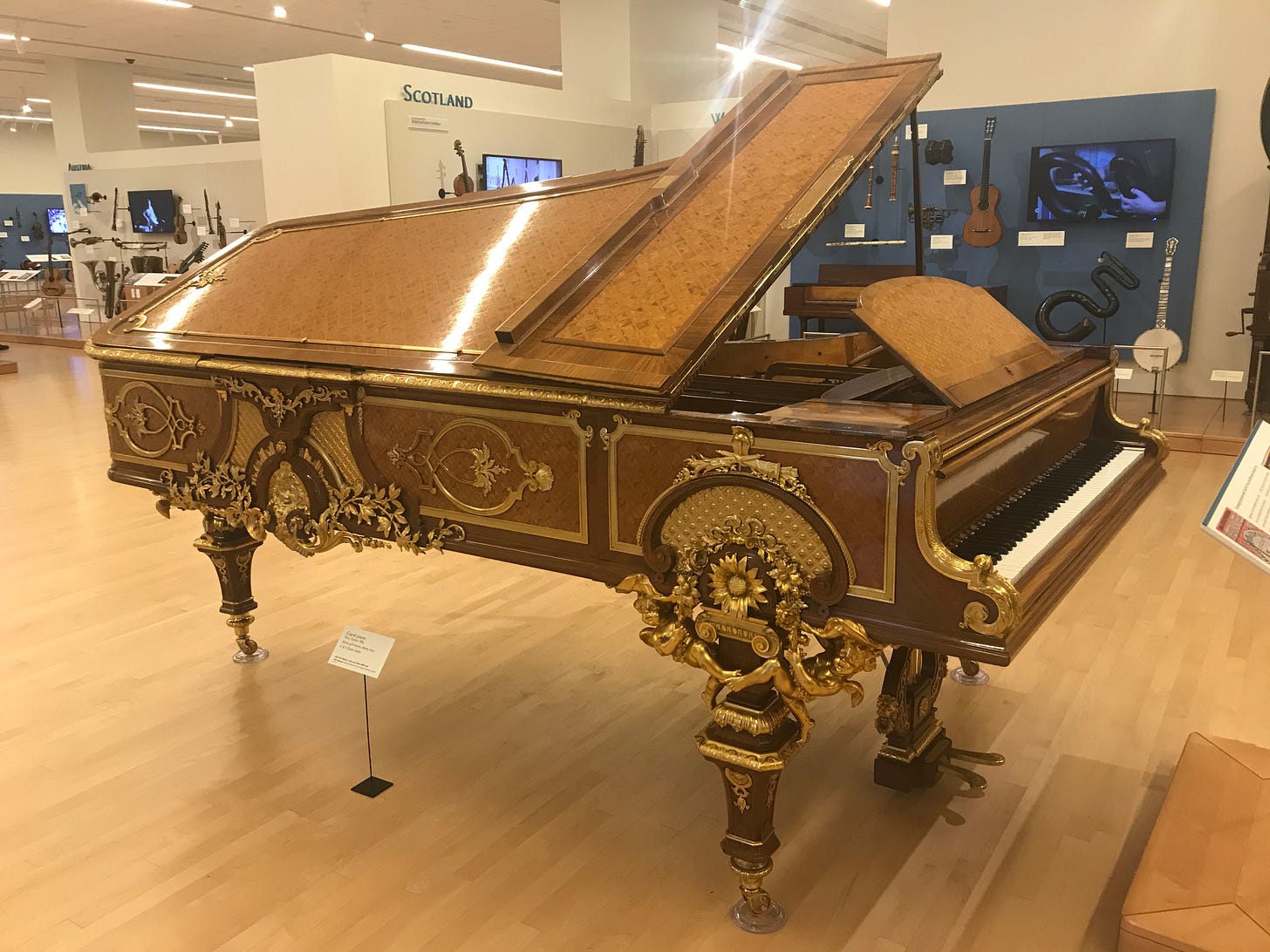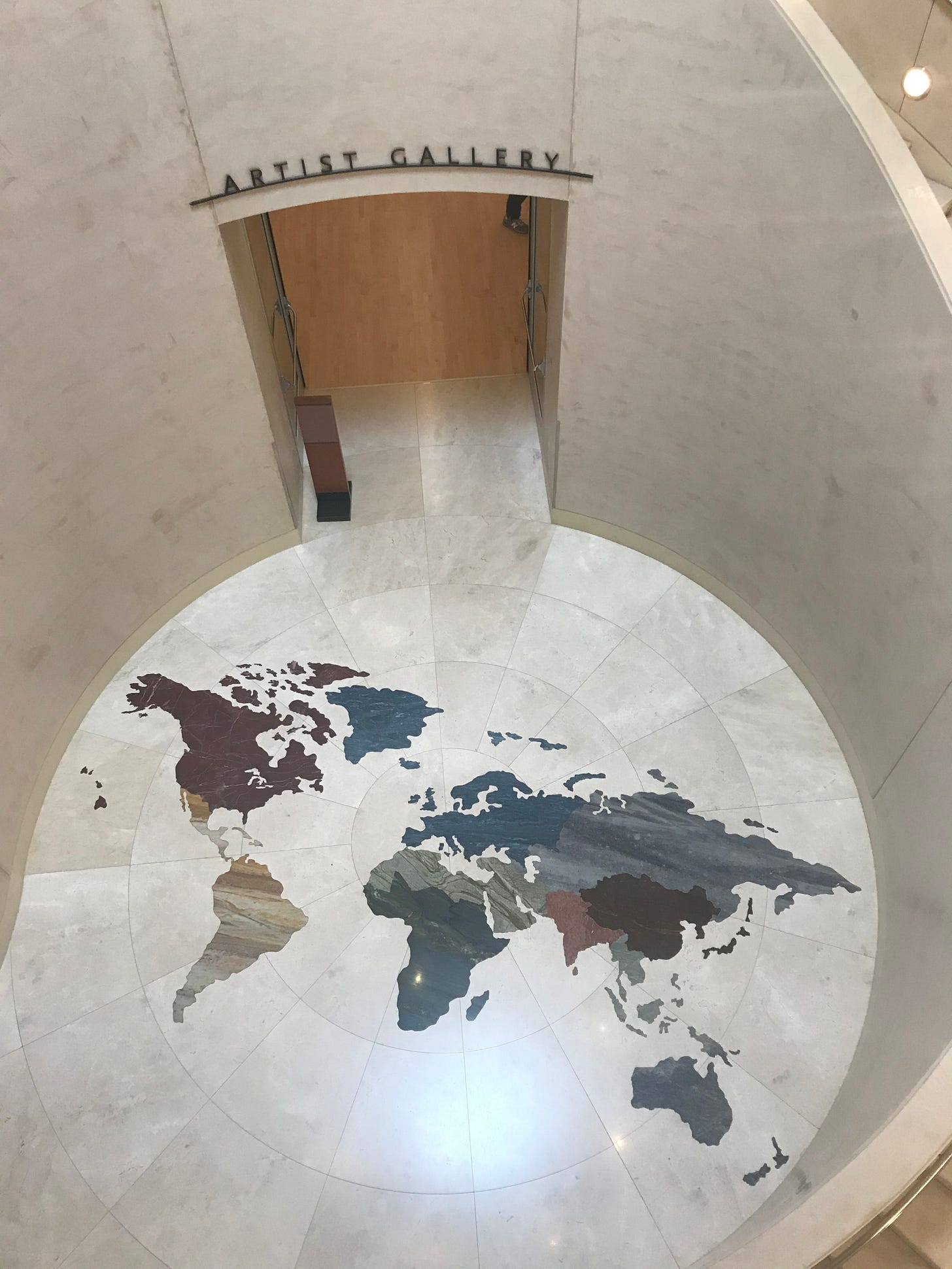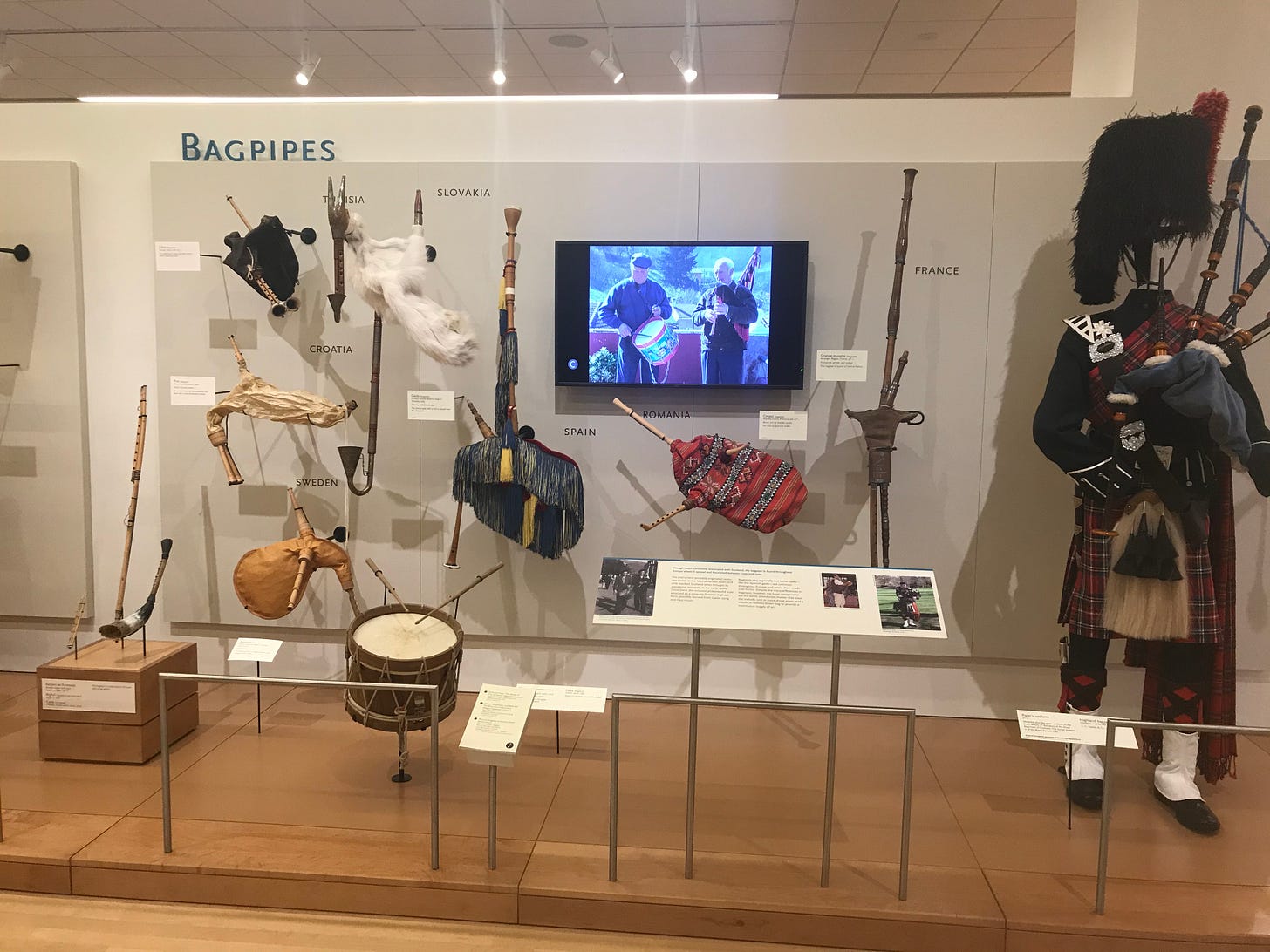Notes from a museum of music
Phoenix's beautiful and fascinating showcase of instruments is a gem in the desert
First of all, apologies for the long hiatus. Some planned travel fell through, and then I spent November writing a novel (and most of December attempting to catch up on all the things I didn’t do while writing a novel). It’s been a bumpy month, but I did leave you in very good hands with Greg’s pub odyssey!
Now: It’s winter, so let’s talk about someplace warm and sunny. For a long time, I kind of avoided Phoenix. I had it in my head that it was a parched, sprawling, overdeveloped wasteland devoid of culture, so I’d jump off the plane at Sky Harbor and hightail it to Sedona or the Grand Canyon or an Anasazi ruin like my clothes were on fire, which as soon as I stepped outside the airport they very nearly were.
I have to admit that that judgment was not entirely fair. Exhibit A: The Musical Instrument Museum, a vast, cool (in both ways) palace of some 15,000 musical instruments and related cultural artifacts.
If you haven’t been to Phoenix in a while, you may not have heard of the MIM; it opened in 2010, which is less recent than it seems if you’re over 40. Its galleries contain items from more than 200 countries or territories, and it’s the biggest museum of musical instruments in the world. Everywhere you can find people on this planet, they are smacking, plucking, blowing, bowing, or strumming some object to make music, and the variety of man-made musical contraptions the people of Earth have come up with is mind-boggling—as is, surprisingly, the similarities in instruments across wildly distant populations. The sheer number of far-flung places that boast some kind of native bagpipe, for example, is astonishing, especially when you consider how few people actually want to listen to them.
“But Sam,” I hear you interrupt, “I like music, sure, and I was forced to take piano lessons as a child, but I can’t really imagine finding a museum full of dusty old violins or whatever in cases all that interesting.” I shared your tepid enthusiasm. And then I got in there and started looking and reading and listening and watching videos. Pro tip: If you have two or more days in Phoenix, buy the two-day pass. TOTALLY worth it, and you still won’t see everything. There’s a reason MIM is rated by TripAdvisor as the No. 1 attraction in Phoenix. (Camelback is not air-conditioned.)
Part of the museum’s genius is that it solves the problem of how everyone can hear the thousands of instruments on display without making an unbearable racket: On entry, you’re issued an audio device that hangs around your neck and is attached to headphones. When you approach an exhibit anywhere in the museum that has audio—say, for its video of an accomplished djembe player—the audio fades in and plays automatically in your headphones. You control the volume, of course, and you can always take your headphones off to ask your companion if he’s ever heard anything quite like this before.
The Geographic Galleries take you to different regions of the world (Africa, the Middle East, Asia/Oceania, etc.), and as you walk through them you see so much more than instruments hung on the walls with explainer cards. There are maps, elaborate costumes, and video loops that show how the instrument is or was made and/or played in its native context. Large, free-standing instruments are displayed like sculptures, so you can walk around them.
If what seems like all the instruments in all the world is a slightly overwhelming array of rabbit holes to go down, you might prefer to start in the Artist Gallery, which groups historic instruments and accessories by the artists who played them. This is where you can find a concert costume worn by Roger Daltry, Pablo Casals’ cello, a dress salsa queen Celia Cruz wore in concert with Tito Puente, or Roberta Flack’s piano.
Perhaps you have no use for musicians, possibly having dated or been married to one; you may enjoy the Mechanical Music Gallery, which celebrates the golden age (late nineteenth–early twentieth centuries) of instruments that played themselves. I had no idea there were so many kinds of mechanical instruments—the collection here goes way beyond player pianos and music boxes.
One end of the room is occupied by the colossal “Apollonia” orchestrion, a dance hall organ that is kind of a whole band in one very large box. These dance organs were apparently used in European ballrooms right up to the 1960s, which is kind of amazing when you consider that, whether it’s playing “Rock Around the Clock” or “Copacabana,” it sounds a little like a carousel falling down a flight of stairs. It plays at noon and 3 daily, and you will really want to be there for that.
Seriously, the variety of technologies for producing music mechanically is truly ingenious. There are players that use punch cards, rolls, or discs; music boxes of various sizes; slightly creepy but undeniably clever automaton dolls and toys. There’s even a working Violano Virtuoso, which combines a player piano with a violin played by electromagnetic impulses. If you have young children with you on your visit and they’re not super impressed by the Geographic or Artist galleries, some time among the music machines might brighten their eyes.
And everyone of all ages will love the Experience Gallery. This is where you leave your headphones around your neck and make your own music! Obviously, you can’t touch the instruments in the other galleries, and if you’ve ever played a musical instrument, after an hour or two you’ll be feeling the urge to grab something and show off. It’s a no-brainer that kids will be delighted, but I was amused by how much pleasure adults took in shyly striking a gong or beating a drum. There are instruments from around the world here, too, not just the most sturdy percussion from the Creative Playthings set you had as a child. There’s even a theremin!
When I travel, I often use museums as a fallback activity for days when the weather is bad. There, I said it. But museums are working hard now to integrate interactive technology, and, for my money, nobody does it better than the Musical Instrument Museum. It has so much that, even if you think you’re not all that interested in musical instruments, you will find something that mesmerizes you, and you will learn something. Music is, fundamentally, one of the most human things we humans do; we all do it a little differently, but we all do it. Sometimes even with bagpipes.





It's great to have you back in this forum. Congrats on writing the novel, looking forward to its widespread distribution.